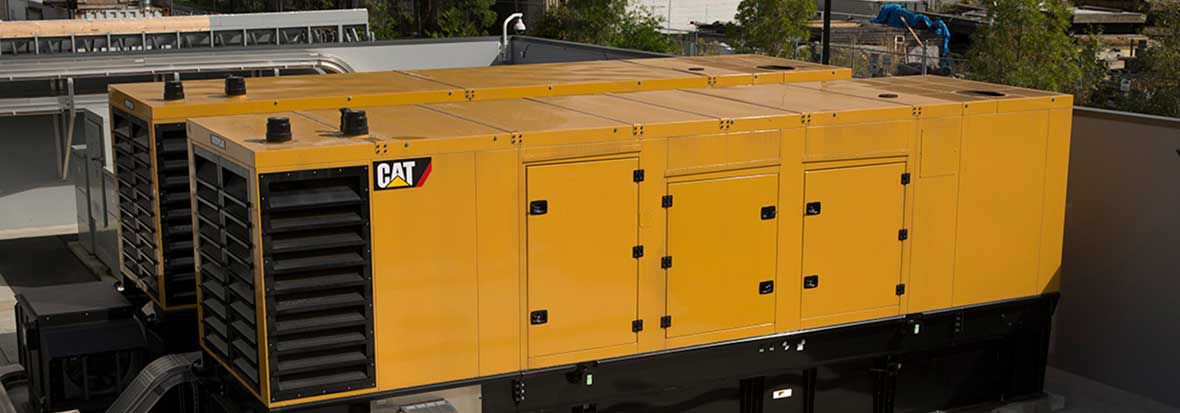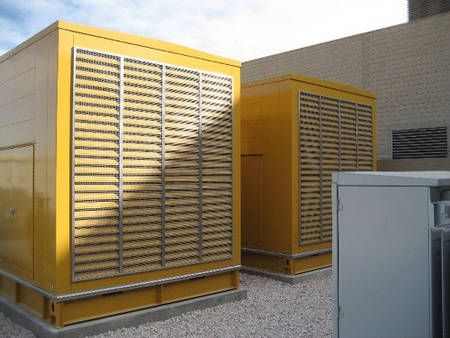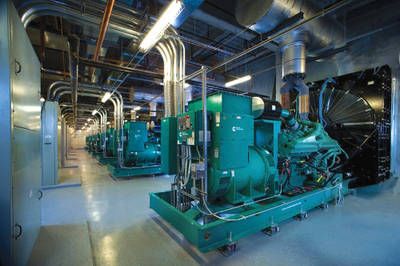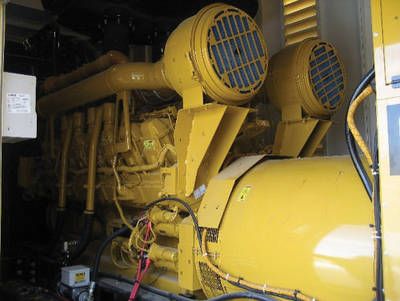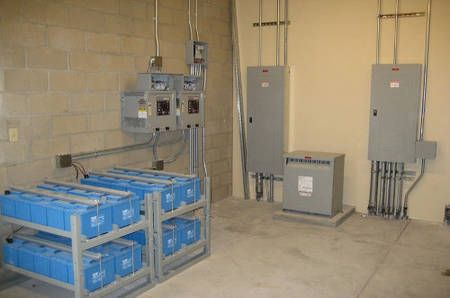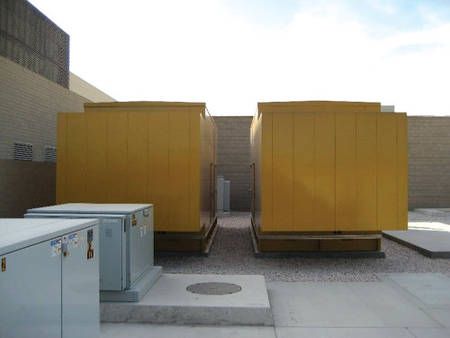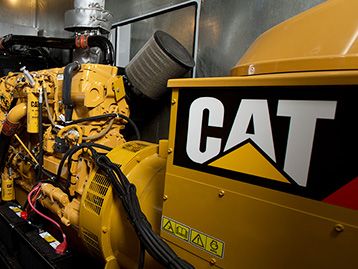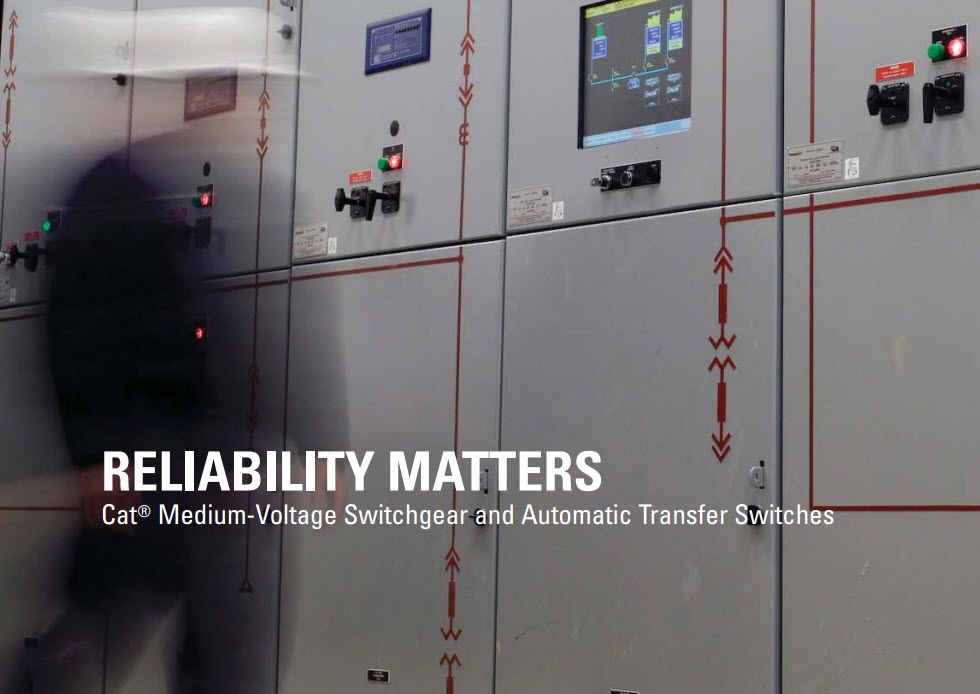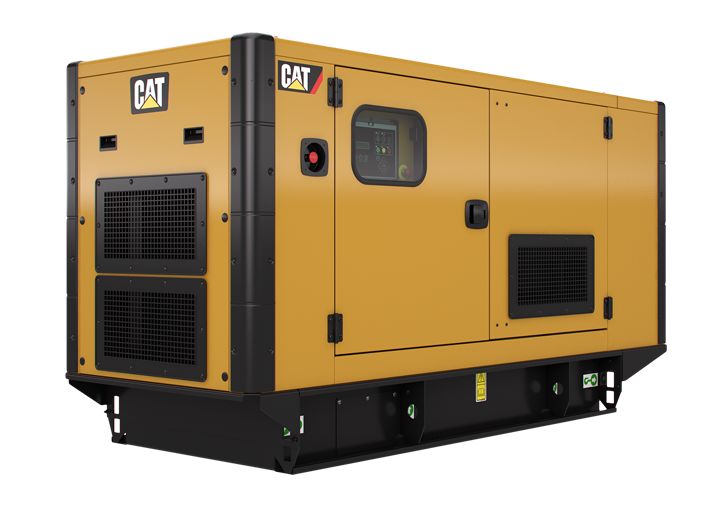Hospitals, airports, data centers, water and sewage facilities, fueling stations, communication, and transportation systems require alternate-power sources to limit the impact and ultimately save lives during times of crisis. The loss of electrical power due to storms, natural disasters, or high-power-demand issues are increasingly common. The loss of business and the associated economic impact from power outages are significant. Emergency generators are necessary to provide the reliable power required to maintain operations during primary supply system failures.
Why Diesel-powered Generators are Used
Diesel-powered generators are considered among the most reliable approaches to providing backup power. When compared with alternative fuels and technologies, diesel-powered generators provide a steady supply of high-quality power and superior performance for transient or fluctuating power demands due to the high-torque characteristics of diesel engines (see Figure 2). Many international building codes and standards effectively require diesel generators for code compliance because of the need for rapid response time, load-carrying capacity, fuel supply and availability, and reliability. One of the most important and unique features of diesel-powered generators, as compared with other technologies, is quick response time and block-loading capability within seconds of normal source-power failure.
NFPA 70: National Electrical Code (NEC), Article 517.30, as well as the California Electrical Code require hospitals and critical care facilities to have standby power systems that start automatically and run at full capacity within 10 seconds of power failure. Natural gas-powered generators generally are not acceptable as a source of power for generators due to fuel-source reliability. During disasters, such as an earthquake, gas lines are immediately turned off to avoid the risk of fire and explosion in case of a rupture. Lastly, diesel generators are available in a range of sizes to meet facility power needs.
Generator Ratings
When evaluating generator sets for parallel operation, ratings are important because the rating directly affects the efficiency and effectiveness of the selected generator set based on the application. It is especially important to understand the specific application, as this will help in selecting the proper rating. Specifically, the following factors should be taken into consideration:
- Average load factor
- Maximum required load
- Typical load variation
- Annual run time per genset.
ISO 8528-5-2013: Reciprocating internal combustion engine driven alternating current generating sets, Part 5: Generating sets defines generator ratings. These rating definitions were created for gaseous and diesel generator sets and were developed to provide consistency across manufacturers. ISO 8528 should be considered a minimum standard for all generator set ratings. If the manufacturer determines that a product is capable of higher performance than that of the ISO definition, the manufacturer's rating should be used. Definitions relevant to this discussion are power factor, standby power rating, prime power rating, and continuous power rating.
- Power factor: The standard power factor for a 3-phase generator is usually 0.8.
- Standby power rating: The generator set is capable of providing emergency power at times when no other source is available. ISO-8528-1 limits the 24-hour average load factor to 70% of the emergency nameplate rating. No overload capacity is available for the standby or continuous-power-rated generators. The ISO standard gives no limit to run time in the event of a utility power outage; however, manufacturers have limits on their generator run time typically in the range of 200 to 500 hours for an entire year. Standby generators typically operate around 50 hours/year with maximum expected usage of 200 hours/year.
- Prime power rating: Generator sets rated for prime power are designed for supplying electric power in lieu of commercially purchased power from a utility. These include applications like rental generator sets supplying power for temporary use as well as applications that are typically remote from a utility grid, such as wilderness outposts, remote mining, and petroleum exploration operations. ISO limits the 24-hour average load factor to 70% of the prime rating nameplate. Prime-rated power is capable of providing the power for an unlimited time period to a varying load. Overload is also allowed but only at 10% of the rated value, which is permitted to only once in 12 hours.
- Continuous power rating: With a continuous power rating, the generator can again provide a power supply for an unlimited period-but only to a non-varying load. But the average output power comes out to be between 70% to 100% of the rated power output. The load should be "relatively steady," which means that there should be no significant variations in it; otherwise, the prime power rating could be a better option to consider. A continuous-rated generator usually does not have any overload capability.
Using Low-voltage Generators in Medium-voltage Systems
For generators rated 2,000 kW or less, it is common to install 480 V 3-phase generators and step up voltage transformers. The cost of medium-voltage generators is significantly higher-in the order of an additional $80,000 to $150,000 per unit. Additionally, medium-voltage generators generally do not have the UL listing necessary to support emergency power loads.
For medium-voltage standby generation systems that undertake closed-transition transfer operations, the medium-voltage side of the step up transformers must match the utility's distribution system voltage.
What Paralleling Is
Paralleling is the operation in which multiple power sources, usually two or more generators, are synchronized and then connected to a common bus. Also, with closed transition back to the utility, PSG will parallel the generators and synchronize the generator output with the utility source for a short duration before transitioning back to utility power. When connecting the generators in parallel or synchronizing with the utility, the following criteria must be met:
- Matched/proper frequency
- Matched/correct phase rotation
- Phase voltages in phase and within specified voltage range.
Typical parameters that determine synchronization include a voltage difference of less than 5%, a frequency difference of less than 0.2 Hz, and a maximum phase angle of 5 electrical degrees between the sources.
Closed transition is used when it is desirable to transfer loads with zero interruption of power when conditions permit. It is used when the generator system transfers back to the utility and when load testing the generators with building loads. Closed transition can be either a soft load transfer or a make-before-break transfer. The PSG soft-load transfer synchronizes and operates the generators in parallel with the utility and transfers loads in increments between the two sources, thereby minimizing voltage or frequency transients on the generator plant and utility distribution system.
The typical soft-load-transfer overlap time is around 2 seconds. The make-before-break transfer will parallel the generators and perform a transfer of load from the generator to the utility. This can be the transfer of one large block load or the transfer of multiple block loads having time delays between the block loads. Time-delay transfer can either be programmed through the PSG or the downstream automatic transfer switches (ATS). Typical ATS make-before-break transition overlap time is usually less than 100 milliseconds.
Benefits of Parallel Power-generation Systems
Paralleling multiple sources provides increased reliability, flexibility in load management, and maintenance capabilities with little to no disruption. Multiple generators paralleled to a common bus can better serve emergency and business critical loads, particularly for system response time and dynamic load response once in operation. However, more complex, parallel generator standby systems have significant advantages with respect to reliability and redundancy. These advantages include redundancy, efficiency, expandability, and ease of maintenance and serviceability.
Redundancy: The redundancy inherent in the parallel operation of multiple generators provides greater reliability than a single generator unit for critical loads. If one unit fails, the backup loads are redistributed among other generators in the system on a priority basis. In many environments, the emergency loads that need the highest degree of reliable backup power usually account for only a fraction of the overall power generated by the system. In a parallel system, this means that most emergency elements will have the redundancy necessary to maintain power even if one of the units goes out. If an N+1 configuration is adopted, one generator can be offline for maintenance while serving the required loads. Furthermore, providing a running spare, an N+1 generator configuration will increase the reliability of the generator system from 98% to 99.96% reliability.
One of the primary purposes of redundancy is to eliminate single points of failure. The objective is to remove the single points of failure, and caution must be exercised to ensure they are not simply moved to another part of the system. The controls enabling redundancy must also be analyzed to avoid failure modes that compromise reliability. For example, paralleled generator sets that rely on a single master control for signals to start and close to a paralleled bus actually replace one failure point with two, as the master control and the communication link between the master and the generator sets each represent single points of failure. A well-engineered paralleling system will have dual hot-backup control systems, redundant communication pathways, redundant best battery select dc power supplies, multiple breakers, multiple power pathways, and a well-documented procedure for system recovery whenever a component fails.
Efficiency: A more efficient system provides more stability and reduces cost and losses. Loads do not remain at a constant level in most installations. Variations in power demand can cause a single larger generator to run at loads of less than 30% of capacity, which could cause wet stacking. The optimum operational point for prime movers is between 75% and 80% of its rated value. At this point, the generator will be at its maximum efficiency. Fuel and maintenance costs will also be reduced. The paralleling control system can be equipped with a generator load control that can add and remove generators in response to the actual load/demand of the system. This functionality is enabled by a generator removal time delay, which can initiate generators being removed from the bus as a function of the acceptable generator percentage loading selected by the operator. If the load changes and demand reach 90% of running capacity, for example, an additional generator can be started, synchronized, and paralleled to the bus with no time delay.
Expandability: When sizing generators to match system load requirements, it is often difficult to accurately project increases in load and adequately plan for unanticipated additional requirements. If load projections are aggressive, the initial investment in a generator may be higher than necessary. On the other hand, if load projections are inadequate, reliable standby power may be compromised or expensive post-installation system upgrades may be required. Parallel systems offer a level of scalability and modularity that allows for variations in load over time and optimum operation of the installed units. If physical space planning is executed appropriately, generators can be added for additional power supply when required.
Ease of maintenance and serviceability: In an N+1 paralleled generator system, if a generator in the system fails or requires maintenance, individual units can be dismantled and serviced without disrupting the function of the remaining units. Furthermore, the redundancy inherent in a parallel system provides multiple layers of protection and ensures an uninterrupted supply of power for critical circuits.
It is important to match all of the new paralleled system generators with the same manufacturer, ratings, and type. When modifying an existing system, matching the existing generator manufacturer, type, pitch, and ratings is highly preferred. This matching will avoid load sharing issues between the generators. Moreover, standardizing on one model type will also enhance maintenance and simplify operations of the generator system.
Leslie Fernandez is senior project engineer, electrical at JBA Consulting Engineers. He has more than 30 years of engineering, design, and field experience including medium-voltage distribution systems for military, mining, tunneling, food manufacturing, power production facilities, high-rise facilities, and casino-resort complexes.


